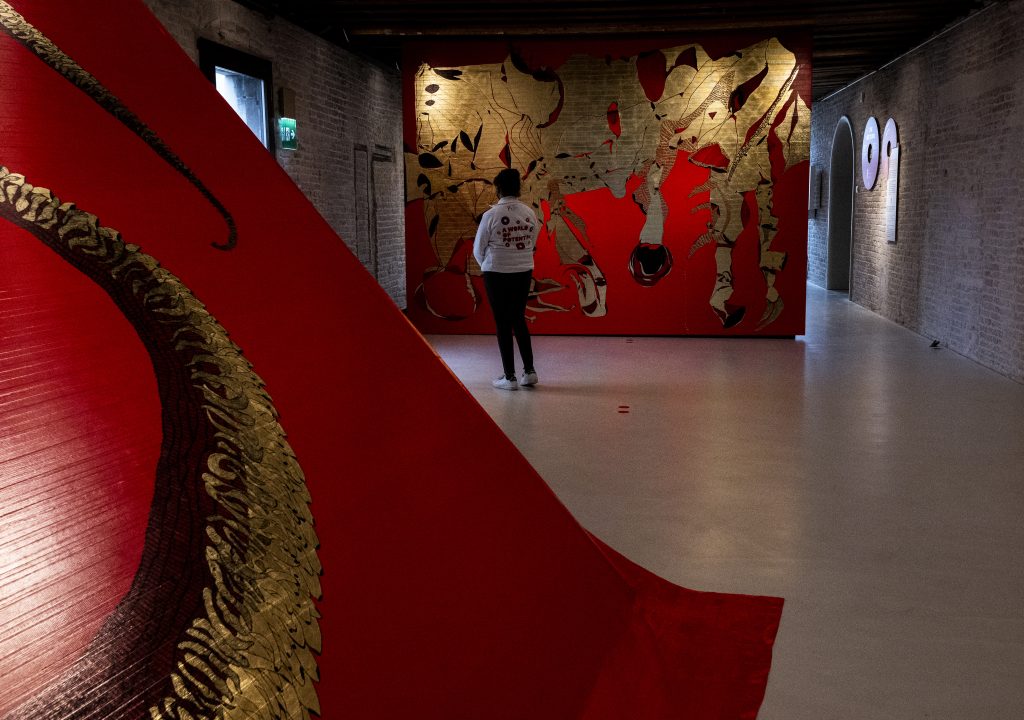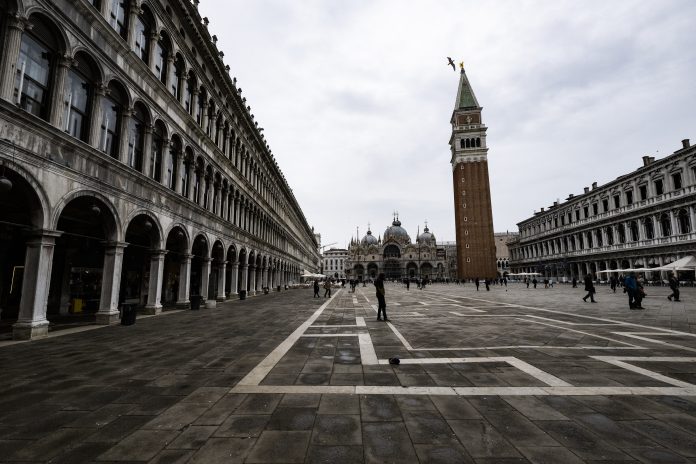For centuries the impressive arcades flanking St Mark’s Square in Venice have embodied the watery city’s elegance, harmony and architectural significance.
Now, the Renaissance-era palazzo whose galleries span as far as the eye can see on the north side of the square is opening to the public for the first time on Friday, following a three-year renovation.
The building known as the Procuratie Vecchie, now owned by Italian insurer Generali, was long the seat of the Procurators of St Mark, who for centuries administered the assets of the church in the wealthy city of Venice, away from the public eye.
The exclusive invitation for locals to finally glimpse the interior of the storied palace following Friday’s inauguration has already attracted reservations from more than 3,000 Venetians. Doors will be open to tourists from around the world from April 13.
Built in the 12th century, the Procuratie Vecchie was devastated by fire in 1512, its Venetian-Byzantine building replaced in 1538 by the Renaissance gem in classical style, whose arches — along with the square’s basilica, bell tower — are one of the St. Mark’s most recognized features.
Famous facade
Generali commissioned renowned English architect David Chipperfield to breathe new life into the building.
Although St Mark’s Square is one of the world’s most famous, “none of us has really imagined what is behind these facades,” Chipperfield told AFP, adding it was rare for such a big square to enjoy “such a coherent facade.”
“Superficially it all looks as if it has been built in one time but it has been built by a number of architects over 100 years,” he said, adding that his role was to correct many of the “haphazard changes” made over the years.
Besides restoring the first and second floors and improving accessibility on higher floors, the work has included building a new home for The Human Safety Net, a foundation launched by Generali to help the world’s most vulnerable, including refugees.
The renovation includes the addition of exhibition rooms, an auditorium and a cafe.
The foundation’s director, Emma Ursich, said the Procuratie Vecchie was a fitting spot for the group, given that the Venetian officials who lived and worked there were also responsible for widows, orphans and the destitute.
“So for us it’s a nice homage to the history and to the identity of this building that we have the home of The Human Safety Net here, which works around social inclusion topics,” Ursich said.

Venice’s winged lion
To the left of the main entrance, the winged lion of Saint Mark, symbol of the city but also the emblem of Generali, is inlaid in the white marble wall. A plaque commemorates the birth in 1831 of the insurer in Trieste, which moved part of its operations to Venice the following year.
“We had a building that had been compromised over a very long period of time. It had been modified, added on, changed,” said Chipperfield. “So our responsibility was to bring the building back into some type of integrity.”
The recovery project took three years following a two-year design phase aimed at preserving as much of the existing structure as possible.
Chipperfield lauded Italy’s skilled craftsmen who “have been restoring buildings for a thousand years.”
They relied on techniques and materials that are part of Venice’s tradition, such as a finishing plaster with a satin effect known as “marmorino,” and “terrazzo,” a mix of colored marble fragments and cement for floors and walls.
Just across the square is the 17th-century Procuratie Nuove building. The home of illustrious members of the Habsburg dynasty in the mid-1800s, the structure overlooks the secretive Royal Gardens along the Grand Canal.
The gardens were reopened to the public in 2019 after five years of restoration.









